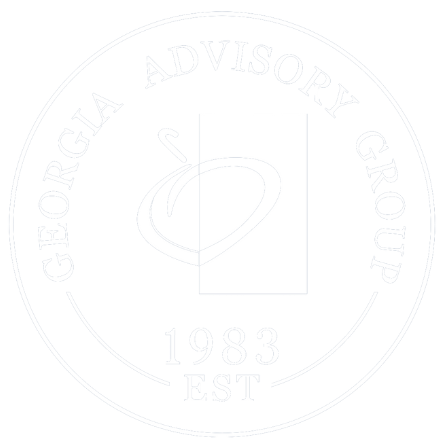Do you know how to Grow and Protect your Portfolio? | Georgia Advisory Group
Let’s talk about a secret to grow and protect your portfolio prior to and in retirement. And I’m not talking about annuities here. This is a subject that often confuses and bewilders the average investor. But if you’re patient, it will be the best secret you learn this year. I would venture to guess that 98% of financial advisors avoid this like the plague, and your firm is most likely on that list.
Hello again, Dave Duley here, sharing great ideas for you to consider when heading into or already in retirement. For over 40 years, I’ve shared insights and great ideas to get you and your family on the right track when it comes to maximizing wealth and income in retirement. Today is going to be no different, and it’s especially important in today’s financially volatile environment that we’re in. So take the time to listen carefully to the end, and let me know if this gives you some comfort knowing you can protect and grow your portfolio well into the future. Plus, I’ve got a free gift for you. Let’s dive in.
Learn to trade options. Yes, you can do it. I’m talking about basic strategies that will set you apart from 99% of the typical investors out there. Why learn to trade options? It provides leverage, reduces risk, generates income, and lowers costs. And if you say, “Dave, I don’t want to learn,” then at least be smart enough to use a firm that has experts to do it.
Let’s start with some basics today. An option contract is a security, just like a stock. It has a bid and an ask price. It is a negotiated contract that has strictly defined terms and conditions. Stock options provide the right, not the obligation, to buy or sell units of 100 shares of stock at a certain price and by a certain date. The stock price, or exercise price, is the defined definition. Remember, each option is represented by an underlying stock, and each option contract is for 100 shares.
Let’s use Apple as an example to make it simple. There are two types of options: call options and put options. I can buy a call or sell a call option. I can buy a put or sell a put option. Today, I will focus only on buying a put option and selling a call option.
The premise is that you and I already own the underlying security, meaning we are not using options to sell or buy a stock we don’t own. Let’s start with buying a put option. So let’s say you own Apple, and you currently own 300 shares. Apple is currently trading at $160 a share. Now, you bought it with the idea that it will go up in value, but like your car insurance or your home insurance, you want to insure your investment. You want to protect it. Remember, you may have 15 different stocks worth $500,000 in your portfolio, and you want to protect it.
In this example, with just one stock, you have 300 shares at $160, or $48,000 invested in one stock. Even though you bought it thinking long-term, you still want to cover your backside. You would then look at how much a put option on Apple would cost you. You would determine how much of that asset you want to protect. Let’s say you decide that if Apple goes down to $155, that’s okay. But if it goes below $150 a share, it would be a significant loss. So you may need a $150 put option, and you find out that the May $150 Apple put option will cost you $1.50.
Now, what does that mean? First, options expire on the third Friday of each month, 99% of the time. Some options on widely traded stocks may have other expiration dates, but most expire on the third Friday of each month. Today is April 15th, and the third Friday of May is the 19th, next month. So, around 30 to 34 days from now.
What I know is I need three put contracts for the May 19th expiration. The cost is $1.50 per share. Because each contract equals 100 shares, I need three contracts at a cost of $1.50 times three, which equals $450.
Now, let’s recap. You have 300 shares of Apple stock worth $48,000. You just bought insurance by purchasing three May $150 put contracts for $450. Now, three things can happen between today and May 19th, which is 34 days from now. Apple can go up, it can go down, or it could stay where it’s at today.
If Apple goes up and, let’s say, on May 19th, the stock is trading at $170 a share, you’re up $3,000 on Apple. Now, you’ve got to subtract the $450 you paid for the insurance, and you’ve netted $2,550.
On the other extreme, if Apple drops to $130 prior to May 19th or at expiration date, which is 34 days from now, obviously, your $48,000 is now worth $39,000, or a $9,000 reduction from where you bought it at $160. Now, it’s not a loss yet because you still own the stock. But you have a put option at $150, meaning you have the right to put it to someone at the $150 share price. And that’s exactly what you would do since you bought the put. You have the right to put it at any time, hence the name “put.” You could have done it once the stock went below $150, let’s say at $149, two weeks ago. But when you put it, that means it’s gone, or you sold it at the price of $150, which was your put insurance. Here, it was down to $130 a share, and you protected $20 or $6,000 you would have lost had you not had the put in place. So you now buy Apple at the $130 price, profit, and it covers it.
If the stock stays above $150, the contract just expires worthless. Now, let’s figure out how to pay for this insurance that you just got to protect the portfolio because to continue purchasing put options every 30, 60, or 90 days would add up and eat into your returns. So let’s focus on selling a covered call on Apple.
Now, “covered” just means, as we said earlier, that I already own the stock, which is the only way you want to do this. So, you own Apple at $160. You now protect your downside with a put option at $150, and you paid $450 for that put option. Now, I’m thinking, “Hey, if this stock by May 19th goes to $180 a share, I’d be willing to sell it.” That means I would look to see if I can get at least $1.50 or $150 per contract, times three, or $450, to sell my call at $180, again, by May 19th or sooner if the stock goes above $180. It can get called away from me because I’ve sold that right. But they deposit into my account today the $450 by selling that right.
Now, remember, I paid $450 for the put, and the same day, I sold the call for $450. That’s the perfect scenario. It’s break-even. I’ve got my position covered. If Apple jumps to $190 or $200, I’m out at $180. I could scream and say I left all that money on the table, or I could look at it and say, “Wow, I made an 11% return in 34 days.”
This particular option strategy is called a collar. At this point, you may be saying, “Dave, you lost me a while back.” Some may say, “Wow, why isn’t my firm doing this type of strategy?” My reply is simple: this takes work and knowledge. 99% of advisors won’t do it because they simply don’t want to spend the time, and very few have the working knowledge to do it with efficiency.
The wealthy surround themselves with experts in this particular area. They hedge their bets in today’s environment like never before. You better cover your backside. A simple way to do this is either learning the basics of options or hire fiduciaries that are experts in this area.
To get my next video on the basics of using options, subscribe below, or better yet, go to my website and request our book on protecting your portfolio. It’s called “Crash-Proof Your Portfolio.” It’s an easy read. If you scroll to the bottom of the homepage, you’re going to see it. All you have to do is click on it. In addition, click on our newsletter and leave us a note or a question, and we will follow up to help you navigate the road ahead.
Till next time!


